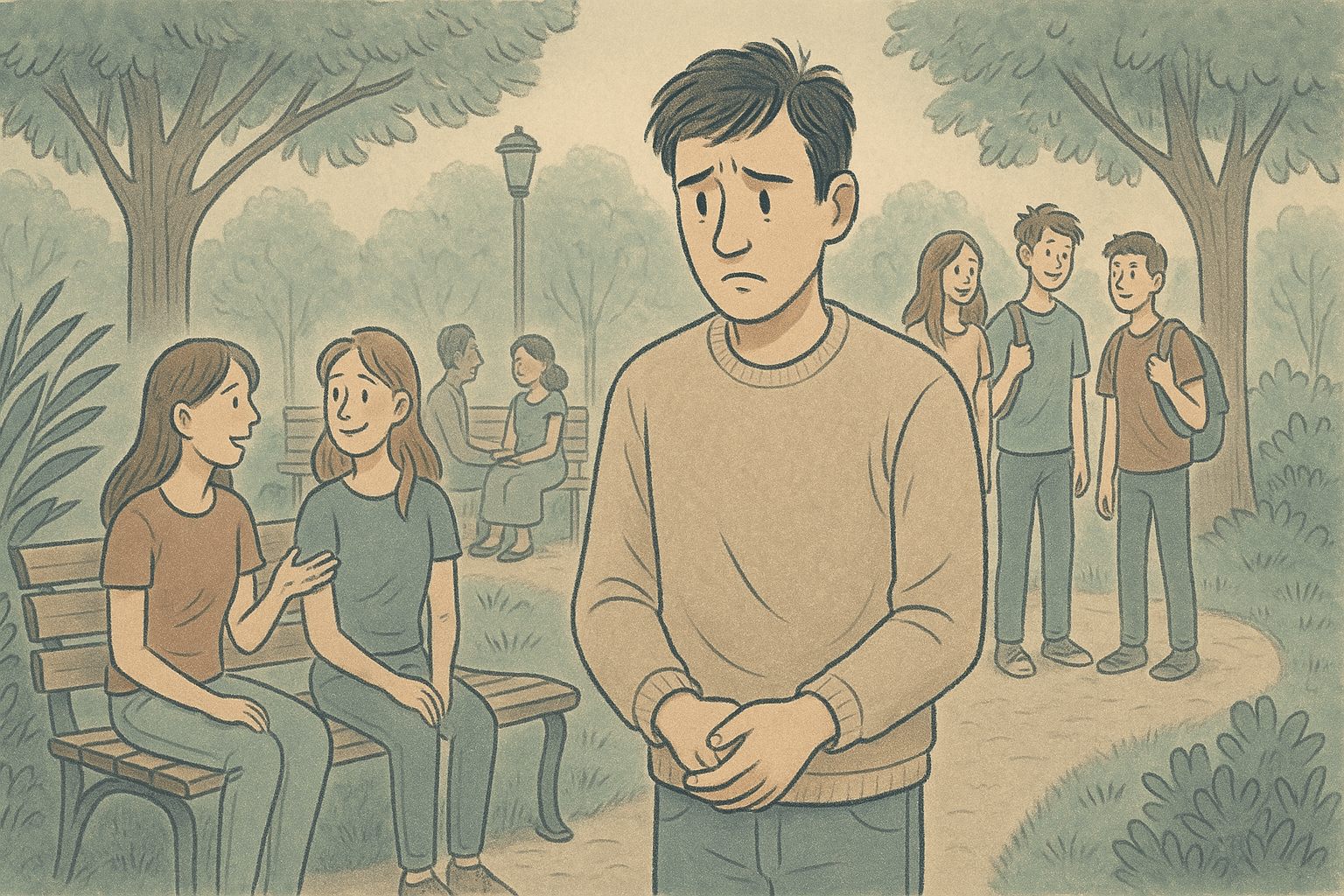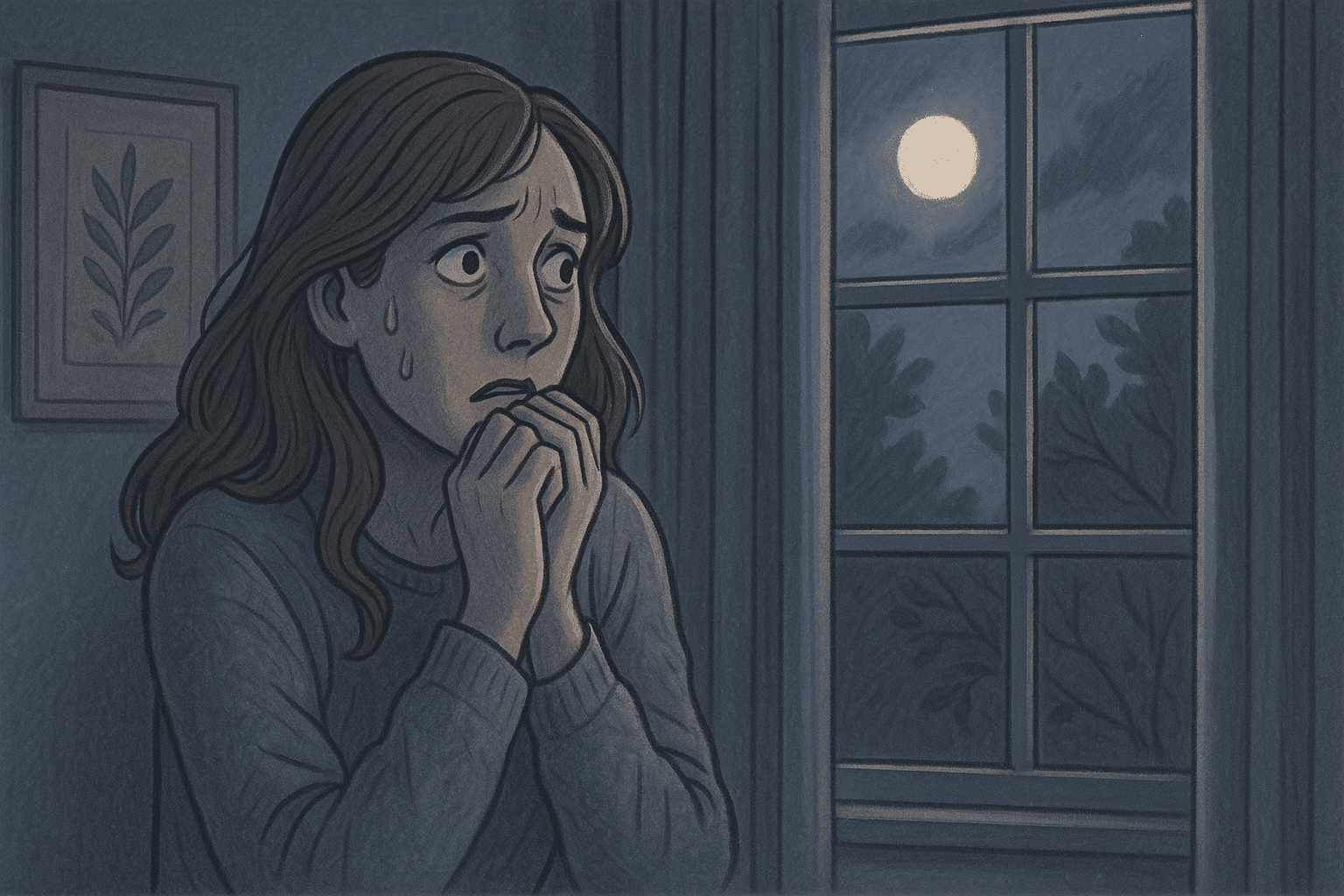Key Takeaways
- Personality disorders are categorized into three distinct clusters (A, B, and C), each with unique characteristics and treatment approaches.
- Cluster A disorders involve odd and eccentric behaviors, Cluster B features dramatic and emotional traits, while Cluster C is characterized by anxious and fearful patterns.
- Treatment success rates improve significantly when therapy is customized to the specific cluster and individual needs.
- Recovery is possible with proper intervention, though personality disorders typically require longer-term therapeutic approaches compared to other mental health conditions.
- A Mission For Michael provides specialized personality disorder treatment that utilize proven approaches like DBT, Schema Therapy, and CBT for long-term recovery.
What Are Personality Disorders?
Personality disorders are enduring patterns of inner experience and behavior that deviate markedly from cultural expectations, causing significant distress or impairment. Unlike temporary emotional states or reactions to specific events, these patterns remain stable over time and typically begin in adolescence or early adulthood.
What makes personality disorders particularly challenging is their ego-syntonic nature, meaning individuals often don’t recognize their patterns as problematic. Instead, they may believe others are at fault or that the world is simply difficult. This perception can make seeking treatment more complicated than with conditions like depression or anxiety, where individuals typically recognize something is wrong.
Impact on Daily Life
The effects of personality disorders extend far beyond clinical symptoms, profoundly impacting everyday functioning. Individuals with these conditions often struggle with maintaining stable relationships, securing employment, and managing basic self-care.
The pervasive nature of these disorders means that nearly every aspect of life, from intimate partnerships to casual social interactions, can be affected.
Founded in 2010, A Mission For Michael (AMFM) offers specialized mental health care across California, Minnesota, and Virginia. Our accredited facilities provide residential and outpatient programs, utilizing evidence-based therapies such as CBT, DBT, and EMDR.
Our dedicated team of licensed professionals ensures every client receives the best care possible, supported by accreditation from The Joint Commission. We are committed to safety and personalized treatment plans.
Understanding the Cluster System Basics
The cluster system represents a practical framework for categorizing personality disorders based on descriptive similarities. Developed to bring order to the complex landscape of personality pathology, this system helps clinicians quickly identify patterns and tailor treatment approaches accordingly. While these clusters share certain characteristics, each disorder within them maintains distinct features and treatment considerations.
DSM-5 Classification
The Diagnostic and Statistical Manual of Mental Disorders (DSM-5) organizes personality disorders into three distinct clusters, each characterized by particular patterns of thinking, feeling, and behaving. Cluster A includes the “odd or eccentric” disorders: Paranoid, Schizoid, and Schizotypal. Cluster B encompasses the “dramatic, emotional, or erratic” disorders: Antisocial, Borderline, Histrionic, and Narcissistic. Cluster C comprises the “anxious or fearful” disorders: Avoidant, Dependent, and Obsessive-Compulsive. This classification system helps clinicians conceptualize these complex conditions, though we recognize that many individuals don’t fit neatly into a single category.
Diagnostic Criteria
Diagnosing personality disorders involves identifying enduring patterns that significantly deviate from cultural expectations. For a formal diagnosis, these patterns must manifest in at least two of the following areas: cognition (ways of perceiving oneself, others, and events), affectivity (emotional responses), interpersonal functioning, and impulse control. Additionally, these patterns must be inflexible and pervasive across various personal and social situations.
Cluster A: Odd/Eccentric

Cluster A personality disorders share a common thread of social detachment and unusual thought patterns.
Individuals with Cluster A personality disorders often appear odd or eccentric to others, frequently misinterpreting social cues and harboring unconventional beliefs. The social isolation characteristic of Cluster A disorders typically stems from genuine discomfort with close relationships.
People with Cluster A disorders often struggle to connect emotionally with others and may appear cold or aloof. Their thought processes frequently diverge from conventional reasoning, sometimes resembling psychotic disorders but without the complete break from reality. Some examples of disorders under cluster A include:
Paranoid Personality Disorder
Paranoid Personality Disorder manifests as a pervasive distrust and suspiciousness of others, even without justification. Individuals with this disorder interpret others’ actions as deliberately threatening or demeaning, often holding grudges and responding with anger to perceived slights. They tend to question the loyalty of friends and partners and may read hidden meanings into benign remarks or events.
Schizoid Personality Disorder
Schizoid Personality Disorder is characterized by a profound detachment from social relationships and limited emotional expression. Individuals with this disorder typically show little desire for close relationships, including family connections, and prefer solitary activities. They often appear indifferent to both praise and criticism and display a restricted range of emotional expression, sometimes described as “emotional coldness.”
Schizotypal Personality Disorder
Schizotypal Personality Disorder involves eccentric behavior, unusual thought patterns, and significant social discomfort. Individuals with this disorder often hold magical beliefs, unusual perceptual experiences, or paranoid ideas that influence their behavior but fall short of fixed delusions. Their speech may be odd or vague, and they typically experience intense social anxiety that doesn’t diminish with familiarity.
Cluster B: Dramatic/Emotional

Cluster B personality disorders are united by emotional intensity, impulsivity, and dramatic relationship patterns.
Cluster B personality disorders often create significant interpersonal chaos, as individuals struggle with boundary recognition, emotional regulation, and consistent behavior.
Unlike the social withdrawal of Cluster A, people with Cluster B disorders actively engage with others, though often in problematic ways. Examples include:
Antisocial Personality Disorder
Antisocial Personality Disorder involves a pervasive pattern of disregard for the rights of others, often beginning in childhood or adolescence. Individuals with this disorder typically display impulsivity, deceitfulness, irritability, aggressiveness, consistent irresponsibility, and most distinctively, a lack of remorse for harmful actions. Their behavior often leads to legal problems, relationship difficulties, and inability to maintain stable employment.
Borderline Personality Disorder
Borderline Personality Disorder is characterized by pervasive instability in relationships, self-image, and emotions, along with marked impulsivity. Individuals with this disorder often experience intense fears of abandonment, maintain unstable and intense relationships that alternate between idealization and devaluation, and struggle with chronic feelings of emptiness. Identity disturbance and self-damaging impulsivity are common, sometimes including suicidal behavior.
Histrionic Personality Disorder
Histrionic Personality Disorder involves excessive emotionality and attention-seeking behavior. Individuals with this disorder often feel uncomfortable when not the center of attention, use physical appearance to draw attention to themselves, and display rapidly shifting and shallow expressions of emotion. Their speech tends to be impressionistic and lacking in detail, and they often consider relationships more intimate than they actually are.
Narcissistic Personality Disorder
Narcissistic Personality Disorder centers on a pattern of grandiosity, need for admiration, and lack of empathy. Individuals with this disorder often have an inflated sense of their own importance, preoccupation with fantasies of unlimited success or power, and belief that they are “special” and should only associate with high-status people. They typically require excessive admiration, have a sense of entitlement, and display arrogant behaviors or attitudes.
Cluster C: Anxious/Fearful

Cluster C personality disorders share a foundation of chronic fear and anxiety.
Unlike the dramatic presentation of Cluster B or the oddity of Cluster A, Cluster C disorders often involve excessive attempts to control anxiety through avoidance, dependence on others, or rigid perfectionism.
These patterns frequently lead to significant self-limitation rather than external conflict. Common personality disorders in this cluster include:
Avoidant Personality Disorder
Avoidant Personality Disorder is characterized by a pervasive pattern of social inhibition, feelings of inadequacy, and hypersensitivity to negative evaluation. Individuals with this disorder often avoid occupational activities involving significant interpersonal contact due to fears of criticism or rejection. They typically view themselves as socially inept or personally unappealing and are unusually reluctant to take personal risks or engage in new activities.
Dependent Personality Disorder
Dependent Personality Disorder involves an excessive need to be taken care of, leading to submissive and clinging behavior and fears of separation. Individuals with this disorder have difficulty making everyday decisions without excessive advice and reassurance, need others to assume responsibility for major areas of their life, struggle to express disagreement due to fear of loss of support, and feel uncomfortable or helpless when alone due to exaggerated fears of being unable to care for themselves.
Obsessive-Compulsive Disorder
Obsessive-Compulsive Personality Disorder (distinct from OCD) involves preoccupation with orderliness, perfectionism, and control at the expense of flexibility, openness, and efficiency. Individuals with this disorder show excessive devotion to work and productivity, inflexible morality and ethics, inability to discard worn or worthless objects, reluctance to delegate, rigid and stubborn behavior, and excessive attention to details, rules, and lists.
Key Differences Between Clusters
| Characteristic | Cluster A: Odd/Eccentric | Cluster B: Dramatic/Emotional | Cluster C: Anxious/Fearful |
| Main Description | Social detachment and unusual thought patterns; odd or eccentric behavior; misinterpret social cues; unconventional beliefs | Emotional intensity, impulsivity, dramatic relationship patterns; interpersonal chaos; difficulty with boundaries and emotional regulation | Chronic fear and anxiety; excessive attempts to control anxiety through avoidance, dependence, or perfectionism |
| Specific Disorders | Paranoid, Schizoid, Schizotypal | Antisocial, Borderline, Histrionic, Narcissistic | Avoidant, Dependent, Obsessive-Compulsive |
| Thought Patterns | Unusual or suspicious thinking (e.g., paranoia, magical thinking, indifference to social feedback) | Dramatic, black-and-white thinking; rapid shifts in relationships; unrealistic self-appraisal | Anxious cognition; catastrophizing, doubting abilities, fixating on details and mistakes |
| Relationship Styles | Emotional distance and isolation; vigilant for betrayal; prefer solitude; feel different from others | Intense, unstable relationships; exploitative or clingy behaviors; attention-seeking; use others for validation | Anxiety-driven patterns; desire connection but fear rejection; surrender autonomy for security; impose rigid standards |
| Emotional Regulation | Restricted emotional expression; difficulty accessing feelings | Emotional volatility; rapid mood shifts; impulsive expression of feelings | Chronic anxiety; fear and worry predominate; use avoidance or control to manage emotions |
| Social Functioning | Social isolation; others may avoid due to odd or aloof manner | Social chaos and conflict; frequent ruptures and boundary violations | Social constraint; avoidant or overly compliant behavior limits authentic connection |
| Primary Treatment Approaches | Reality testing, social skills training, cognitive approaches to suspicious thinking, emotional awareness development | Emotional regulation skills training (e.g., DBT), mentalization-based therapy, managing emotional intensity | Anxiety management (CBT), graduated exposure, challenging catastrophic thinking, building self-trust and independence |
| Key Challenges | Difficulty recognizing problematic patterns; ego-syntonic nature; may appear cold or aloof | Emotional overwhelm; impulsivity; unstable relationships | Self-limitation through avoidance; underachievement; isolation |
Treatment Approaches
Therapy Options
Several therapeutic modalities have demonstrated effectiveness for personality disorders, with certain approaches showing particular promise for specific clusters. Dialectical Behavior Therapy (DBT) was originally developed for Borderline Personality Disorder and combines skills training in emotional regulation, distress tolerance, interpersonal effectiveness, and mindfulness with individual therapy addressing behavioral patterns.
Schema Therapy identifies and addresses early maladaptive schemas (pervasive patterns of thinking, feeling, and behaving) that maintain personality difficulties. Mentalization-Based Treatment helps clients develop the ability to understand mental states in themselves and others, particularly useful for Cluster B disorders.
For Cluster A disorders, cognitive approaches that address suspicious or unusual thinking patterns, combined with social skills development, often prove helpful. Cluster C disorders frequently respond well to Cognitive-Behavioral Therapy that targets anxious thoughts and avoidance behaviors through graduated exposure. Regardless of the specific modality, the therapeutic relationship itself provides a crucial corrective experience that challenges longstanding interpersonal expectations.
Medication Considerations
While no medications specifically treat personality disorders themselves, pharmacotherapy can help manage certain symptoms that complicate recovery. Antidepressants sometimes reduce emotional reactivity and impulsivity in Cluster B disorders or alleviate anxiety in Cluster C conditions. Mood stabilizers may help with emotional volatility, and in some cases, low-dose antipsychotics can reduce paranoia or unusual thinking in Cluster A disorders.
Medication decisions require careful consideration of potential benefits versus side effects, with close monitoring for effectiveness.
Finding Hope and Healing at AMFM
At A Mission For Michael, we recognize that personality disorders require more than surface-level intervention. Our comprehensive approach addresses the underlying patterns that maintain these conditions while building practical skills for daily life.

Our compassionate professionals create safe, non-judgmental environments where healing can begin.
With locations in California, Virginia, and Washington, our experienced clinical teams utilize evidence-based treatments like Dialectical Behavior Therapy, Schema Therapy, and Cognitive-Behavioral Therapy customized to each cluster’s specific needs.
We understand that seeking help for personality disorders takes courage, especially when these patterns have shaped your worldview for years. If you’re struggling with the odd thinking patterns of Cluster A, the emotional volatility of Cluster B, or the anxious avoidance of Cluster C, we’re here to guide you toward greater stability, healthier relationships, and improved quality of life.
Frequently Asked Questions
What’s the difference between having personality traits and having a personality disorder?
The distinction lies in severity, pervasiveness, and functional impact. Many people display occasional traits associated with personality disorders without meeting diagnostic criteria. A formal diagnosis requires that patterns cause significant distress or impairment across multiple life domains, remain stable over time, and deviate markedly from cultural expectations.
Can personality disorders be cured?
Rather than “cured,” personality disorders can be effectively managed with significant symptom reduction. With appropriate treatment, many individuals experience substantial improvement in functioning and quality of life. Research shows symptoms often diminish naturally over time, with therapeutic intervention accelerating this process.
Are personality disorders genetic?
Personality disorders involve complex interactions between genetic predisposition and environmental influences, particularly early life experiences. Twin studies show moderate heritability, but environmental factors play crucial roles in determining whether genetic vulnerabilities manifest as actual disorders.
How long does treatment for personality disorders typically take?
Treatment duration varies by individual and disorder cluster, but personality disorders generally require longer-term therapeutic approaches than other mental health conditions. Many clients see meaningful improvement within 6–12 months of consistent treatment, though full recovery may take several years.
What makes AMFM different for personality disorder treatment?
AMFM specializes in personality disorder treatment with evidence-based approaches like DBT, Schema Therapy, and CBT. Our comprehensive programs across multiple states offer integrated care combining individual therapy, group work, and medication management in supportive environments designed for lasting recovery.












